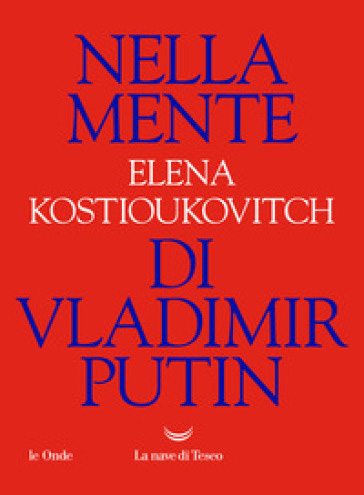Anyone who has read this book will no longer wonder: “Why Italians love to talk about food”! Indeed Petrarch, in De remediis utriusque fortunae, noted that his compatriots preferred talking about food rather than discussing literature: “These are the just deserts of our rotten age, which neglects the needs of learning in favor of the kitchen and scrutinizes cooks but not the scribes.” (Petrarch's Remedies for Fortune Fair and Foul, vol. 1, p. 140, Indiana University Press, 1991).
But even when writers actually are discussed, or when literary or artistic movements are created, if you look closely you’ll find that the mind inevitably returns to matters of cuisine, the table, and food. Take the Futurists, for example, with their cultural revolution, and read the proclamations they launched from the very beginning: “While recognizing that badly or crudely nourished men have achieved great things in the past, we affirm this truth: men think dream and act according to what they eat and drink.” (Marinetti, op. cit., S. Brill, tr.)
Since for Italians it is necessary and even indispensable to talk about food, all the more reason to talk about it at the table (indeed these are the best moments!). Among the other pleasures of the table, the illustrious metaphysician and philosopher of cuisine, Brillat-Savarin, particularly appreciated the joy of convivial conversation. Food, he wrote, is life’s greatest pleasure:
Aphorisms of the Professor. Aphorism V. V. The Creator, when he obliges man to eat, invites him to do so by appetite, and rewards him by pleasure. [...] Aphorism VII. The pleasure of the table belongs to all ages, to all conditions, to all countries, and to all seras; it mingles with all other pleasures, and remains at last to console us for their departure. [...] Aphorism IX. The discovery of a new dish confers more happiness on humanity, than the discovery of a new star. […] At the first course every one eats and pays no attention to conversation; all ranks and grades are forgotten together in the great manufacture of life. When, however, hunger begins to be satisfied, reflection begins, and conversation commences. The person who, hitherto, had been a mere consumer, becomes an amiable guest… (Physiology of Taste, F. Robinson, tr., pp. 25-26 and p. 203).
It is true that not all philosophers saw things the way he did. The hypchondriacal poet Giacomo Leopardi was very sceptical with regard to convivial conversations at meal times:
Now I cannot comprehend why the one time of day when the mouth is occupied, when the external organs of speech are otherwise employed (a most interesting employment, whose proficient execution matters greatly, since man’s well-being, sturdy physical condition, and therefore sound moral and mental states as well, depend largely on good digestion, and digestion cannot be good if it is not begun well in the mouth, according to the well-known proverb and medical aphorism), must be precisely a time when we are obliged to talk more than ever, given that there are many who, devoting the rest of the day to study or seclusion for whatever reason, only converse at the table... (Leopardi, Zibaldone, paper 4183.2, July 6, 1826).
But despite the views of taciturn men such as he, the majority of Italians, as well as true lovers of Italy, will only give up chatting about food at the table if their tongue were to wither. According to this way of thinking, communicating one’s culinary tastes to the world is a declaration of belonging – to a certain city or town, as well as to a macro-region of the country, east or west, north or south. Moreover, it’s a demonstration of one’s involvement in the grand Italian culinary tradition, popular and beloved by all. Reading through the chapters of this book, it will be evident to the reader that the culinary code common to Italians reflects both a variety of small home towns, as well as a general sense of the entire history of Italian culture, which is really a collage of cultures.
The Fischietto of January 13, 1849 published a “Scena storica al Caffè del Cambio” (historic scene at the Café del Cambio), where a Democrat hurls a stool at an Aristocrat’s head:
(The room is filled with people eating, among them many deputies of Parliament.)
Baron N.: “Waiter, bring me some bread”.
Waiter: “Would you like some breadsticks?”
Baron: “I don’t eat breadsticks; I don’t wish to support Piedmont”.
A Piedmontese: “Waiter”.
Waiter: “Yes, sir?”.
The Piedmontese: “Bring me a plate of antipasto”.
Waiter: “Would you like some salami?”
The Piedmontese: “No, I don’t want any salami. I don’t wish to support barons who have been granted amnesty” (Marchi, Quando siamo a tavola, p. 86).
In this succinct example we see how an alimentary metaphor is able to convey political and idealistic meanings, in place of a lengthy, positivistic-rationalistic exposition. Moreover, the food metaphor has the merit of containing a certain amount of good-natured humor, which is the principle glue that holds Italian culture together, as well as its essential engine.
Literature, painting and history also speak to us in the language of the culinary code. A code that includes amusing metonymies, gags of all kinds, and cheerful burlesque parodies, thanks to which everyone enjoys themselves more.
In speaking about Italian small home towns, we are not always aware of the extent to which the different regions are identified, in the consciousness of Italians, with specific products or dishes, whose name is capable of replacing a detailed description of the culture and history of a certain region. The entire geography of Italy and its conquerors, the entire history of invasions and incursions, political dealings and wars is contained in these names.
...
Despite the flaring of passions, the diversity of attachments, the desire to fight for one’s own belltower, this world full of contrasts is actually coherent. Sidestepping the provincial narcissism, everything is bound together, especially at the table, by the common culinary language. Unity under the “edible insignia” extends to the entire nation. As variegated as the peninsula is, some gastronomic topics fill the souls of both southerners and northerners with equal pride.
To begin with, pride in the insuperable quality of the coffee, authentic Italian coffee, prepared the way God intended.
The next object of Italians’ pride is gelato. Enthusiasm for the national ice cream belongs more accurately to the conceptual realm, bearing no relationship to actual consumption, since many adult Italians, albeit with regret, give up gelato so as not to get fat. But, in general, Italy has reason to boast of its cold desserts industry. The legendary (from a technological standpoint) art of chilling anything – water, sorbets, 2 gelato 3 – has been linked to Italian know-how since the Middle Ages.
It is ironic that Italians, pioneers of the cold products industry, at the same time suffer from an amusing phobia: a wild hatred towards anything that is frozen. Frozen foods in supermarkets are purchased reluctantly, mostly out of necessity (to have supplies in the freezer in case of emergencies). Then too in restaurants, as soon as the tiny image of the snowflake is spotted on the menu (indicating that the dish was prepared with frozen fish or meat), the immediate tendency is not to order that dish; indeed some customers actually lose their enthusiasm for the restaurant itself. Proud of the wonderful taste of his own fruit (“...in America the fruit looks beautiful, but has no taste...”), the Italian buyer eyes with distrust exotic fruits imported both in summer and winter (“...they must have frozen them...”) and is attracted instead to seasonal products, all the better if grown right there in Italy.
This mistrust almost equals the hatred for genetically modified foods (which for that matter no one in Italy has ever seen, since their importation is prohibited by law; see MEDITERRANEAN DIET). Convivial conversations devoted to these topics provide material for newspaper articles, and the discussion of newspaper articles is a pretext for new conversations, often trivial, to tell the truth. Thus, the Corriere della Sera’s correspondent in Japan lists the prohibitive prices of fruit in a Tokyo supermarket, shocked by them: cherries are counted one by one and a basket costs $100 or more; a single shiny, red apple or four strawberries cost $60, the same for a banana or fifteen grapes “so identical that they appear to be made of marzipan”. Until the classic conclusion: “... and of course they have no taste” (Polato, in Sette, a supplement of the Corriere della Sera, July 26, 2001, p. 138). The epithets ‘shiny and red’ or ‘identical’ (in reference to the grapes) are intended to shift the sensation of monstrosity created in the reader from the exorbitant prices of the products to their unnatural aspect, that is, to their presumed “artificiality”. In this way, the reader is subtly given to understand that he should rejoice: in Italy, thank heavens, a kilo of cherries, in season, costs 4 euros, and what’s more those cherries may even be worm-eaten – hurray!
English translation copyright © 2009 by Anne Milano Appel



